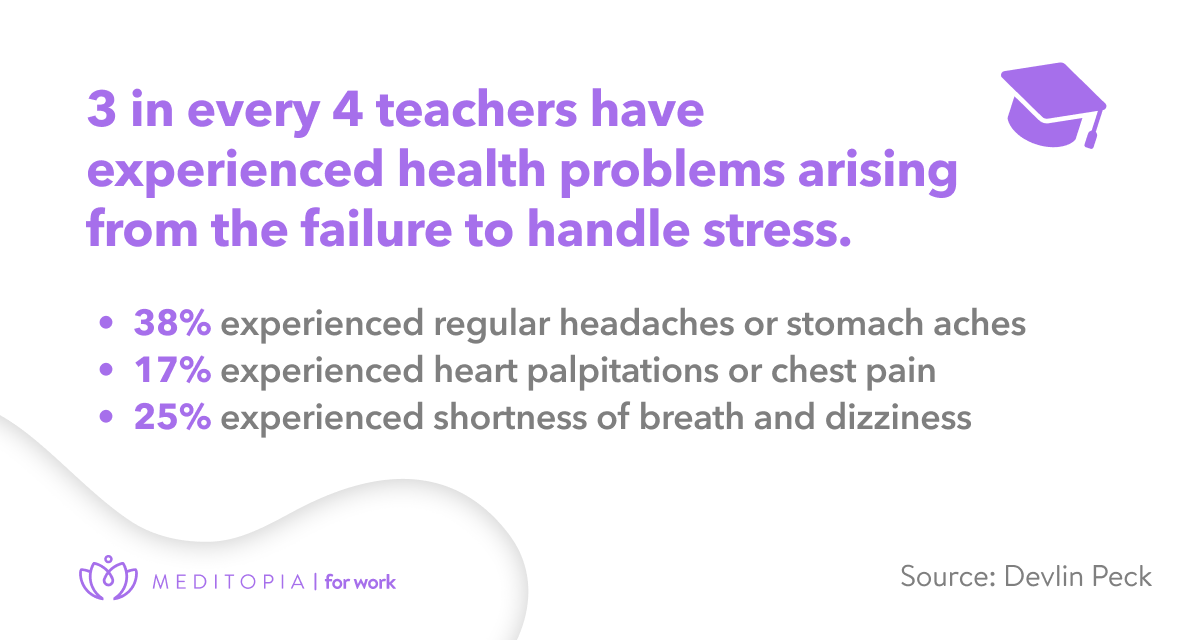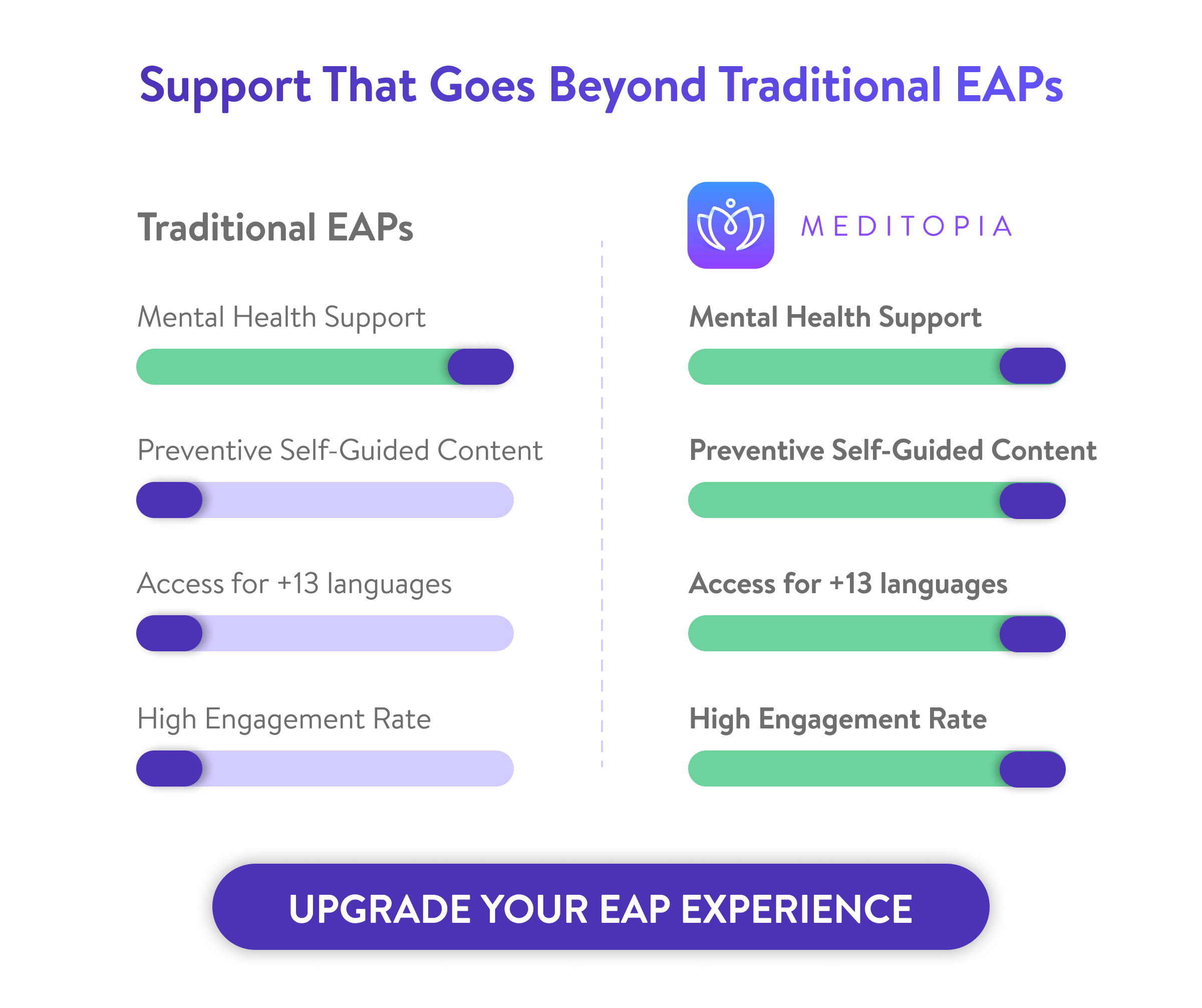Teachers and school staff face sustained pressure that goes beyond normal workload. In fact, reserach found that around 60% of teachers experience occupational burnout [1]. Given this landscape, an employee assistance programme (EAP for schools/educators) becomes essential. Let's discover why and how EAPs for schools and teachers can change the mental health context of your organization.
Why EAPs Matter in the Education Sector
Teachers and school staff are under sustained pressure: large workloads, emotional interactions, shifting methods (including remote/hybrid teaching), student behavioural challenges and administrative burden. Here's why a dedicated employee assistance program (EAP) is essential:
- High Burnout Rates Among Educators
- Emotional Labor and Compassion Fatigue
- Teachers aren’t just educators, they often act as counselors, social workers, and behavioral managers.
- This emotional multitasking leads to chronic fatigue and psychological strain, often going unaddressed without structured mental health support.
- Retention Challenges and Talent Drain
- Nearly 1 in 4 new teachers leave the profession within the first five years, often citing lack of psychological support and poor stress management infrastructure [4].
- EAPs can reduce this attrition by providing accessible employee counselling, resilience training, and burnout prevention resources.
- Growing Complexity of Student Needs
- From rising classroom behavioral issues to trauma-informed teaching, today’s teachers manage more than just curriculum.
- EAPs like Meditopia for Work provide essential coping tools and employee wellness tools to build emotional stamina and support high-stress roles.
- Lack of On-site or HR Mental Health Infrastructure
- Many school systems lack the internal capacity to deliver continuous psychological support.
- A digital-first, mobile-accessible EAP fills this gap with scalable, anonymous, and multilingual care options.
- Compliance and Employer Liability
- With growing awareness of mental health rights in the workplace, failure to support employee wellbeing may expose schools to legal risks.
- Implementing an mental health programs strengthens compliance with workplace wellbeing standards and supports proactive risk mitigation.

EAP Use Cases in Education
A successful EAP does more than offer general support, it provides targeted tools for real-world scenarios in schools. Here’s how that plays out:
Key Benefits of EAPs for Education Institutions
While many sectors benefit from these programs, the education sector sees uniquely strong returns because of its intense emotional demands and workforce vulnerability. Here are key benefits of EAP for schools and educators:
- Reduced absenteeism and turnover among teachers: 44% of public school teachers in the U.S. reported considering leaving their job by the end of the 2020–21 school year due to pandemic-related stress [5].
- Schools that introduced structured wellbeing programs, including employee assistance, saw reductions in sick leave and improved retention [6].
- Boosted morale and mental resilience: EAPs empower educators with proactive tools for burnout prevention in education, such as stress coaching, self-care content, and resilience-building sessions. This improves team cohesion and classroom performance.
- Enhanced morale and job satisfaction: Educators with access to EAPs report feeling more supported and resilient in classroom settings [7].
- Improved compliance and reduced liability: By offering mental health support, schools stay aligned with legal and ethical responsibilities regarding employee wellbeing, particularly under growing scrutiny for workplace psychological safety.
- Stronger reputation and recruitment: As teacher shortages escalate, offering access to a digital EAP like Meditopia for Work becomes a competitive advantage for attracting and retaining top talent.
- Meditopia not only use gamification techniques to keep employees engaged, we also run preventive initiatives, craft corporate challenges, and provide you with expert-made guides to face mental health at work with more guidance.

How to Implement an EAP in a School Organization
From classroom fatigue to trauma, educational professionals benefit most when solutions are relevant, inclusive, and measurable. Below is a step-by-step guide for HR leaders and wellness coordinators.
- Assess wellbeing needs of staff:
- Begin with surveys and focus groups to understand pain points across teaching and support roles.
- Prioritize symptoms of chronic stress, emotional exhaustion, and hybrid workforce wellbeing for roles split across classrooms and digital platforms.
- Choose an EAP provider specialized in education:
- Select a provider offering digital EAP solutions that include app-based access, anonymous counseling, and multilingual content. In Meditopia's case, we work in 14 languages.
- Ensure they provide modules on stress management for teachers, trauma, and conflict resolution.
- Launch with internal campaigns to normalize usage:
- Overcome stigma by embedding EAP info into onboarding, training days, and regular wellness communications.
- Display QR-access posters in staff areas, and get endorsements from school leadership.
- Meditopia for Work can craft the communications and the strategy to engage employees for you.
- Monitor uptake and impact:
- Use built-in dashboards to track usage rates, referral volumes, and improvements in absenteeism or retention.
- Share anonymized insights with leadership to support further investment.
- Continuously adapt based on feedback:
- Quarterly pulse surveys and analytics should guide updates.
- Expand the EAP over time to include new areas like neurodiversity support or family counseling, depending on emerging needs.
Why EAPs Matter for Education: Comparison with Other Industries
While all industries face mental health challenges, the comparison below illustrates how EAP needs vary across sectors. Each row reflects unique stressors and customized wellness priorities. This also supports content cross-linking between industry-specific EAP pages.














.jpg)










